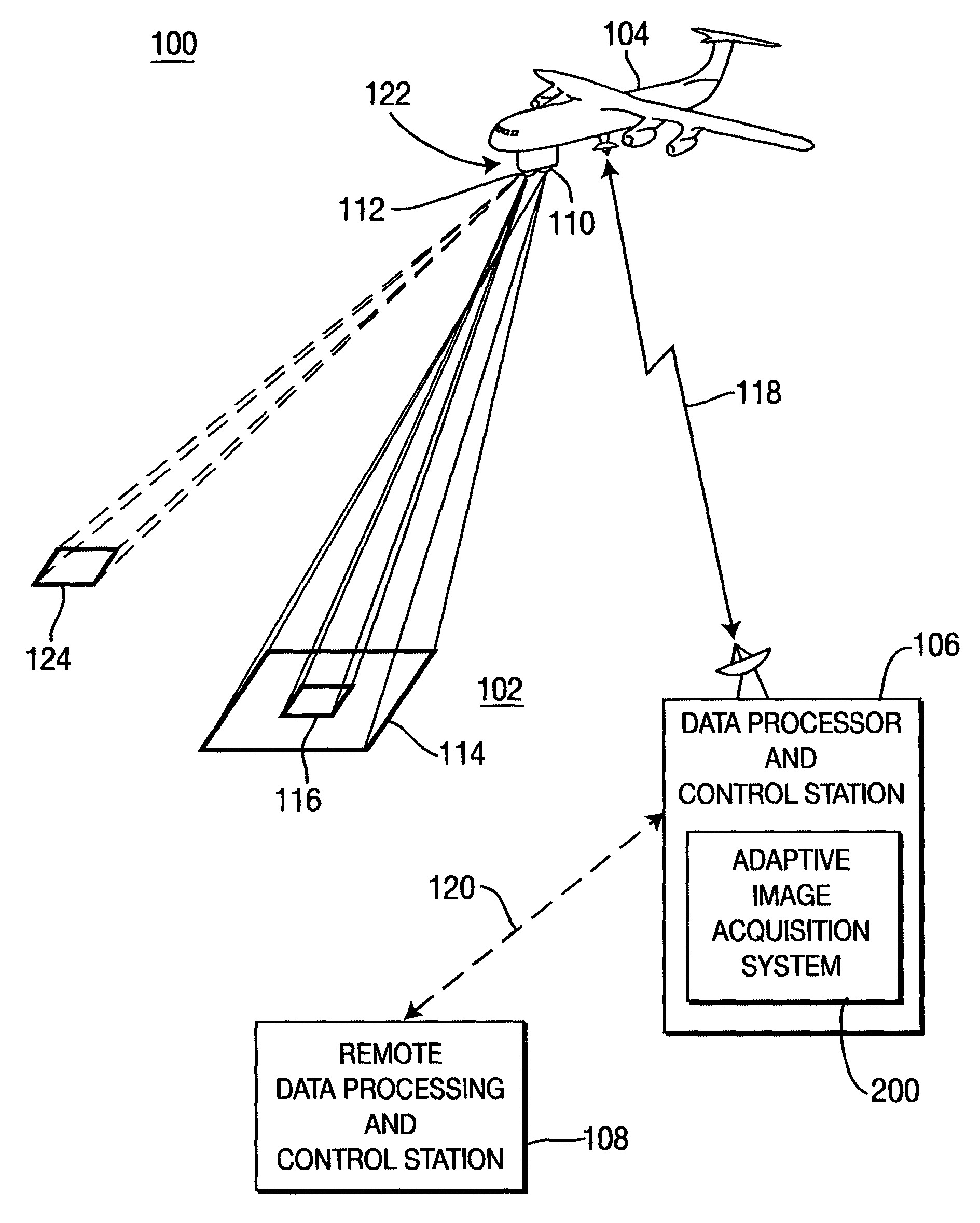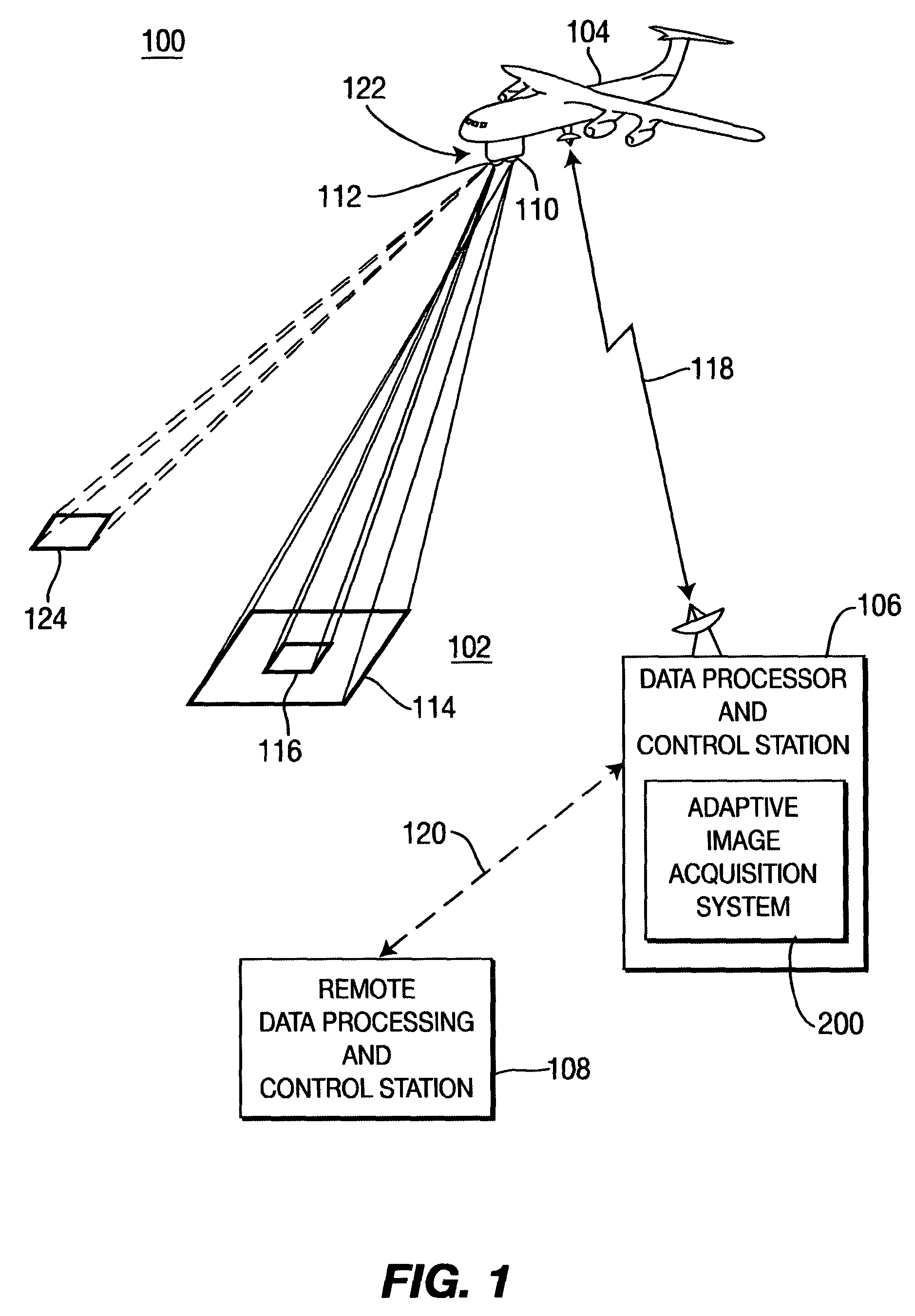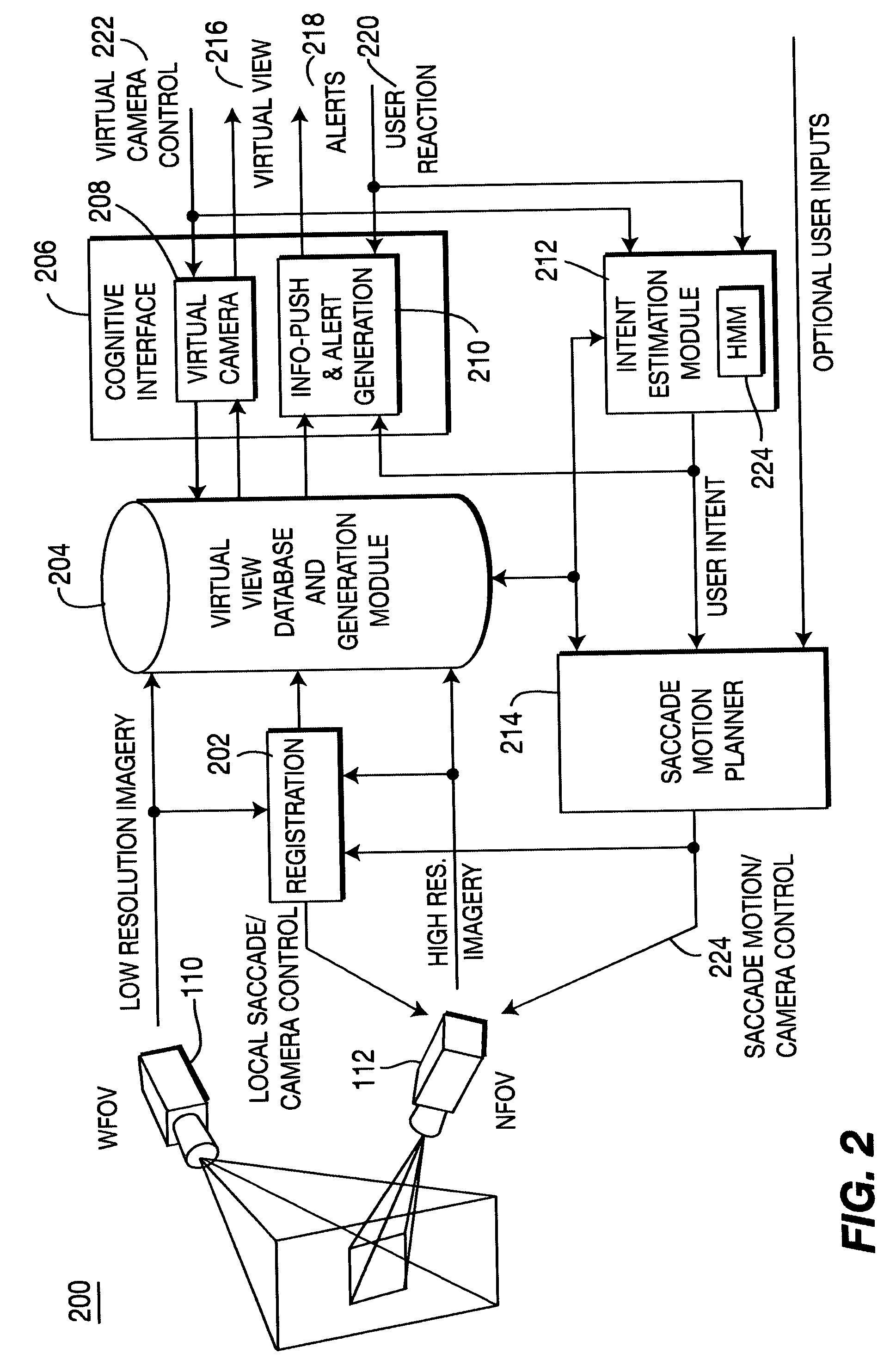Method and system for performing adaptive image acquisition
a technology of image acquisition and adaptive image, applied in the field of image acquisition system, can solve the problems of not being able to solve the problem of a viable solution, requiring too many uavs and operators to cover even a limited coverage area, and a delay in the target revisit period, so as to achieve lower resolution images and high resolution images
- Summary
- Abstract
- Description
- Claims
- Application Information
AI Technical Summary
Problems solved by technology
Method used
Image
Examples
Embodiment Construction
[0030]To achieve persistent surveillance using an unmanned aerial vehicle (UAV), the following three capabilities are necessary: 1) sensor systems must be operated to their maximum information collection efficiency, 2) a single operator must be able to control or guide multiple collection platforms, and 3) analysts must be able to extract in real-time or near real-time the information needed for their task, without the burden of controlling the sensor payload or the burden of searching through vast amounts of irrelevant data.
[0031]The present invention significantly improves the overall surveillance capabilities of UAVs by allowing the UAV to operate to its maximum collection capability by replacing direct control of the UAV by an operator and, instead, giving the operator indirect control. The technique is referred to as SaccadeCam—it is biologically inspired by the Saccade behavior of the human visual system of very high speed and frequent changes in the visual fixation point.
[003...
PUM
 Login to View More
Login to View More Abstract
Description
Claims
Application Information
 Login to View More
Login to View More - R&D
- Intellectual Property
- Life Sciences
- Materials
- Tech Scout
- Unparalleled Data Quality
- Higher Quality Content
- 60% Fewer Hallucinations
Browse by: Latest US Patents, China's latest patents, Technical Efficacy Thesaurus, Application Domain, Technology Topic, Popular Technical Reports.
© 2025 PatSnap. All rights reserved.Legal|Privacy policy|Modern Slavery Act Transparency Statement|Sitemap|About US| Contact US: help@patsnap.com



